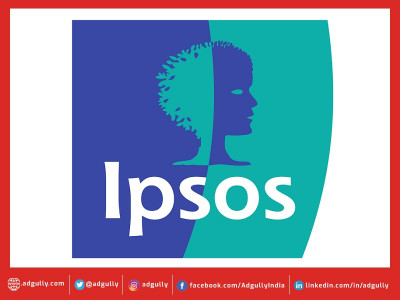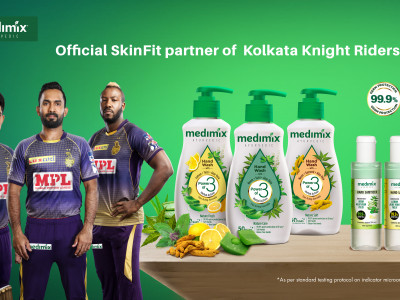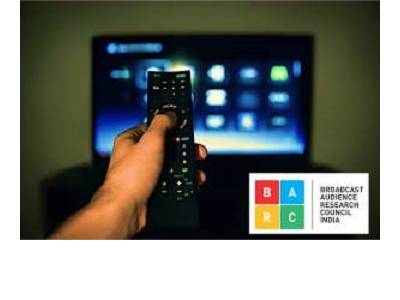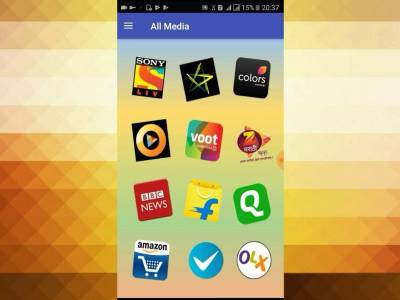93% of the time is spent on videos in Hindi & regional languages: EY report
The Indian digital media segment is set for disruption with growth expected to reach Rs 20,000 crore by 2020, with digital ad spend expected to grow at 23-28 per cent. This was revealed in EY’s report titled ‘Future of digital content consumption in India’.
The demographics are all stacked in India’s favour for digital consumption. India has a large and growing millennial population. This demographic has historically been and will continue to be, an early adopter of new technology and new models of media consumption.
By 2017, India is expected to have more than 350 million smartphones. Inexpensive smartphones and the rollout of 3G and 4G broadband infrastructure are rapidly coming together to leapfrog traditional distribution and democratise online access. Together, these factors are the foundations for accelerated digital media consumption.
The report lists eight key trends in digital content consumption, which are as follows:
Increase in content for the individual
Smartphone penetration in India is expected to grow to 520 million by 2020, making India one of the largest smart phone economies in the world. Broadband penetration will increase from 14 per cent today to 40 per cent by 2020. The rapid up-take of connected devices and broadband connectivity will be instrumental in media consumption shifting beyond traditional media formats such as broadcast and cable TV towards digital mediums.
Increased digital consumption in India is expected to help media conglomerates drive consumer aggregation. As seen elsewhere in the world, while there will be no immediate impact on TV viewership, there will be an increase in the time spent online. We expect to see a significant increase in different formats of media being consumed online across episodes, films, short form content, news, gaming, social interaction and education. The basics have now shifted from roti, kapda, makaan to roti, kapda, escapism. This use of smaller screens on personal devices will fuel “personal escapism” (watching content individually) as opposed to “group escapism” (watching TV in the living room) and this is expected to increase content consumption manifold, as well as change the type of content consumed.
Content breaks its 30 and 60 minute shackles
While earlier, content was created to suit appointment viewing, and was therefore created in multiples of 30 minutes, with the advent of on-demand viewing, this parameter is no longer required. Shortform and snackable content is primarily driving the growth in consumption of digital media, and is very popular with a younger audience.
Consumers have shown increased preference towards shortform content; with the average length of video viewed in India being less than 20 minutes. In addition, 62 per cent of the content consumed on YouTube is short-form content. This trend has led content producers like Eros International & Star to focus on exclusive and snackable content. It has created a huge opportunity for storytelling to be optimised from a story point of view, and not its length and this can be seen in the content created by digital media companies like AIB, TVF, Ping, YoBoHo, Culture Machine and many others.
Omniplatform content consumption
Content consumption patterns have changed. There is currently an unwritten rule that the television serves as the primary screen and that other screens, whether they be tablet, “phablet” or mobile, are all secondary. We are entering an era where all screens will work seamlessly together – they will just happen to come in a wide range of sizes. And it will be the attention it commands from the viewer, through story arcs or other conventions that will dictate the “dominant” screen. Soon, size won’t matter.
For media companies, this has significant implications. TV, film, and print companies need to firstly enable their linear content on digital formats. Secondly, as several studies have shown, all linear content does not always work on digital formats, and there are different content types and formats which they would need to create to address the digital Indian. Thirdly, existing companies will face competition not from their established TV and print competitors, but from any company creating content, which would mean an increased speed to create content, distribute it and also to form alliances to acquire content.
The changing face of rural consumers
The next wave of growth in India’s internet penetration is expected to come from tier II and tier III cities, where wireless mobile internet shall play a pivotal role thus enabling the growth of vernacular and regional content. Currently 45 per cent of online users consume regional language content and this percentage is expected to increase with the growth of internet users.
The growth is expected to be fuelled by availability of low-cost smart phones, low rates of data plans and development of smart cities in rural areas.
Also, the preference of the Indian consumers towards vernacular and regional language content is constantly on the upswing, with 93 per cent of the time spent on videos in Hindi and other regional languages.
Digital content producers can thus look at aggregating/ producing vernacular content to capture the next set of audiences.
Growth in earning population
India’s earning population (over 25 years of age) is expected to grow from 40 per cent of the total population to 55-60 per cent of the total population by 2020. In addition, mobile wallets are increasing in popularity, and would see a 60x growth in number of transactions till 2020. This increase in the earning population and ease in the ability to pay (which is largely controlled by telcos today) will lead to a growth in spending on M&E. Given the right price points – Rs 5, Rs 10, Rs 15 and Rs 20 (sachet theory always works well in India) we can expect to see the emergence of freemium subscription models in the media industry around recent and real-time content.
Community enablement
Given the increase in individual content consumption and the ability to unicast content, mass content will evolve to suit the new market needs. We can expect to see increased niches being created, even in the GEC space. Spurred by the increased rural weight in the BARC TV measurement panel, growth in the connected rural Indian, and better distribution infrastructure, we can expect to see the focus moving from only mass products to mass + niche communities.
Communities like kids, youth, professionals, etc., can be catered to on one side, and on the other, communities around sports, wellness, music, dance, biking, automobiles, motherhood, running, etc., can be created. The monetisation capabilities increase when communities are created, and the role of media companies will evolve in this direction, to enable transactions to meet the diverse needs of communities, apart from just content. For example, a music community cannot just provide music, but also related news, concert tickets, merchandise, “meet the stars” events, etc.
Regional e-celebrities
The proliferation of digital platforms have also given rise to the phenomena of ‘e-Celebs’. Several such e-Celebs have gained mass popularity nationally and internationally on YouTube and other such digital platforms. The cost of creating an e-Celeb is also much smaller, and the digital platform lends itself to trial and error, and lots of data to analyse performance and support creation of such talent.
Globally, E-Celebs such as PewDiePie, Michelle Phan and Casey have created their own niche content areas in the fields of gaming, make-up and fitness, respectively. Marketers are actively tying up with these celebrities to leverage their growing popularity and promote product and service offerings and thereby increasing brand awareness and ‘viral’ presence.
With the growing influence of similar home-grown celebrities in India, it is expected that such talent would be partnered extensively by content and brand players to build offerings for consumers on different digital platforms. Successful e-Celebs can then be ported across media and given shows online, on TV and other media.
Increase in digital gaming
The Indian gaming industry has been a dynamic and evolving industry. Due to an increase in the number of mobile internet users, smartphones and tablets in India, it can be expected that mobiles would be one of the most important platforms in gaming, garnering a 54 per cent share of the total Indian gaming market by 2020.
Mobile gaming would pave the way to growth due to various factors such as the easy access to budget smartphones, increased mobile internet usage, increase in number of tablets used, and of course, increase in individual escapism.
Owing to the large availability of free-to-play games through app stores and mobile carriers, there has been large interest by casual gamers in the market. There are a large number of games in the market catering to different segments of causal gamers such as arcade, adventure, strategy, racing, card, etc. Also, on average, users are spending 11 minutes per day on mobile gaming which is expected to grow rapidly in the near future. Moreover it is expected that app stores launched in vernacular languages would further drive exponential growth of mobile games by dedicated focus from game developers and publishers.
India also has a huge opportunity to become a large game development, game porting and dubbing centre, with its relatively low cost base and affinity to multi-language and multi-format production capabilities.
Conclusion
M&E companies need to do more than react to today’s trends – they need to be able to see emerging trends that will dictate the future of content and how they will impact established business models for ad-supported, subscription and pay-per-use content monetisation.
At a foundational level, the eight key trends we have described will require M&E companies and content providers to develop much richer relationships with audiences. To cultivate these relationships, affected M&E industry players will need to invest in the technologies that will enable them to analyse audience data, deliver deeper engagement with advertising and prove incremental value to brands.
Most importantly, they will need to offer a deeper engagement with the content experience itself in such a way that viewers will choose to directly pay for content streaming services or ownership. They will also need to plan and execute strategies that adapt their supply chains, customer experiences, and analytics platforms to address these trends.
Digital disruption is here, but the opportunity is significant.
















Share
Facebook
YouTube
Tweet
Twitter
LinkedIn